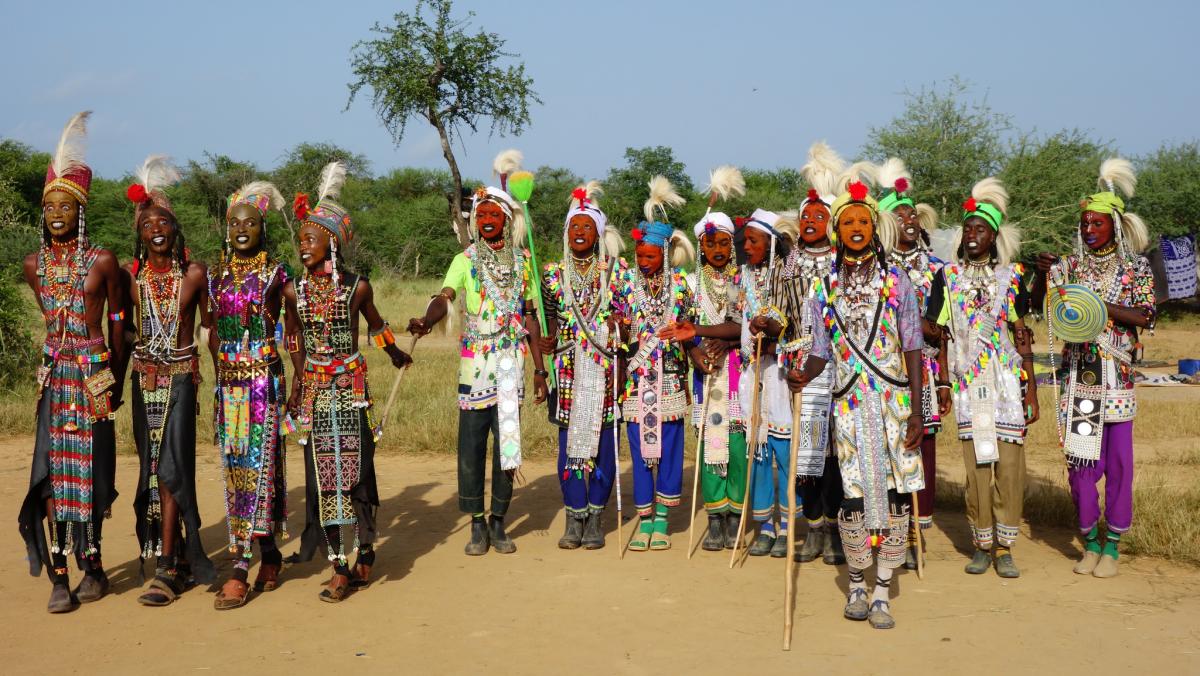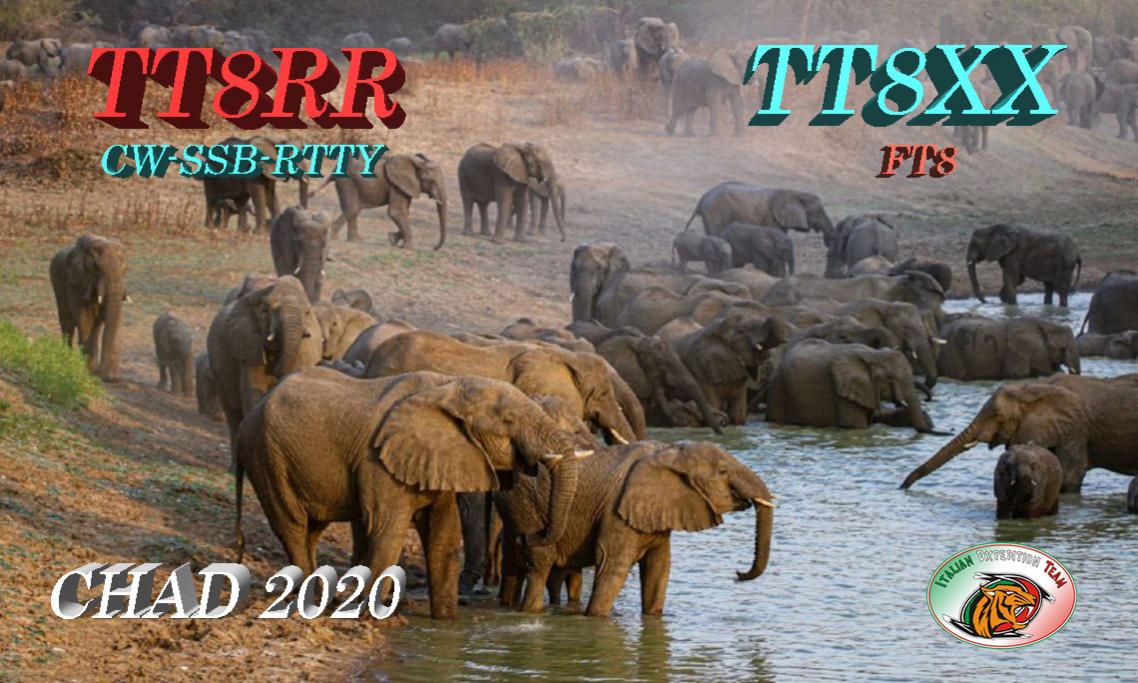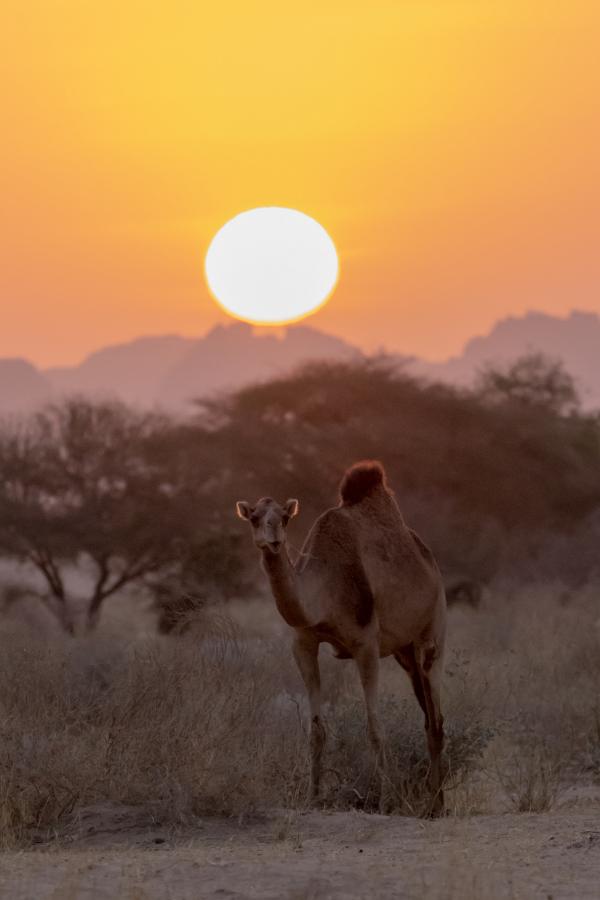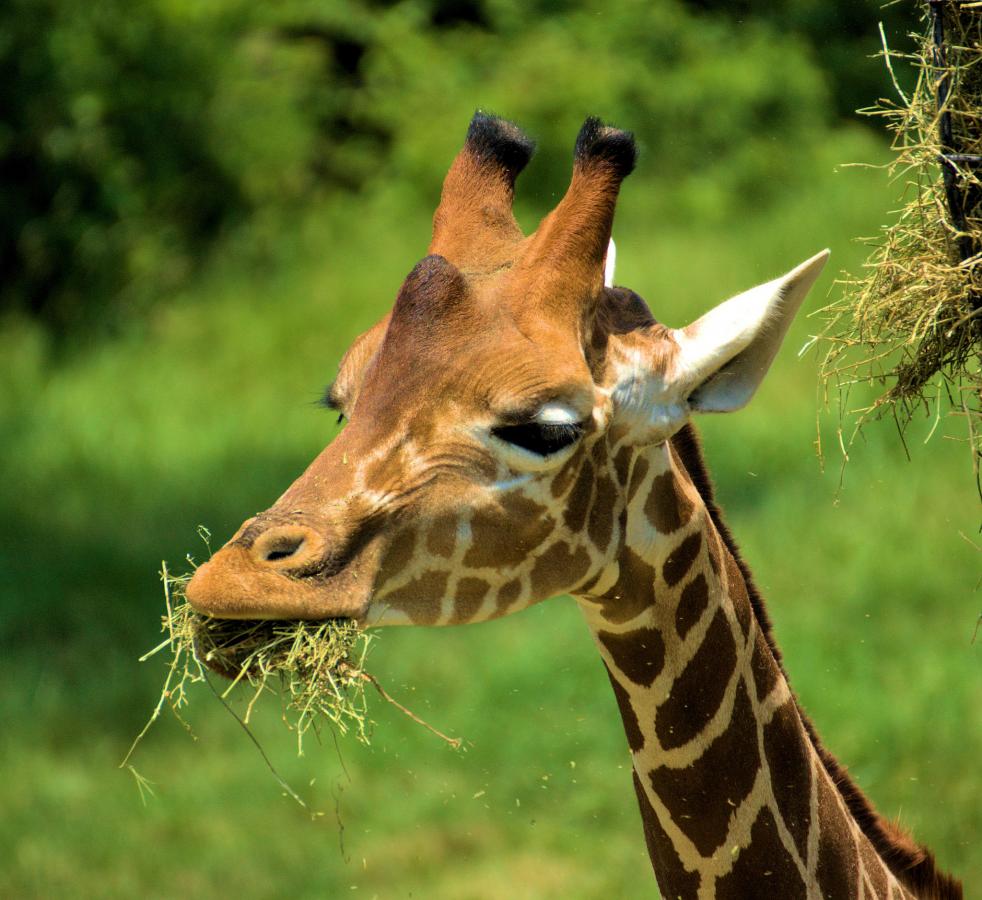TT8RR, TT8XX, TT8TT Team will be active from Chad, 16 - 30 April 2024.
They will operate on 80 - 6m, CW, SSB, Digital modes.
Recent DX Spots TT8RR
TT8RR Log searchTT8XX Log searchTT8TT Log searchRecent DX Spots TT8XX
Recent DX Spots TT8TT
TT8RR call will be used in CW, SSB, RTTY.
TT8XX FT8 only.
TT8TT satellite.
QSL via I2YSB, LOTW, ClubLog OQRS.
Ads for direct QSL:
Silvano Borsa, Viale Capettini 1, 27036, Mortara, (PV), Italy.
Chad exotic country
In Central Africa lies the state of Chad. It is landlocked and shares borders with Nigeria, Cameroon and Niger in the west, Libya and Sudan in the north, and the Central African Republic in the south. The country has more than 11 million inhabitants, most of whom are Muslim. The population of Chad consists of 200 diverse ethnic groups. The largest are the Sara (up to 30 per cent) and the Arabs (about 12 per cent).
Most of the country's territory is plains. In the north there is the Sahara desert and the Tibesti highlands. In the southern part of the country there is a network of rivers. The largest of them is the Shari. It is known for its busy navigation and flows into the lake with the same name as the state - Chad.
When the rainy season comes, the rivers overflow and flood vast areas, making them swampy. In drought, on the contrary, they become shallow.
The north of the country is desert with deserted stony territories and sparse vegetation. All the flora in this area is camel thorns and shrubs. Small acacia trees grow in some areas.
There are isolated oases with date palms. In the south there are jungles and savannahs. There are palm trees and baobabs. There are large grassy swamps near lakes and rivers.
 Chad. Author - Murat Cem Şerbetci.
Chad. Author - Murat Cem Şerbetci.
Climate and fauna of Chad
There are 3 climatic zones in the state: subequatorial (centre), tropical (north) and equatorial with frequent monsoons (south). In summer the temperature range keeps from + 21 to +50 °С.
Fauna in Chad is diverse. In desert animals are almost not found. In savannahs there is a great number of predators - leopards, hyenas, jackals, lions. In such places live many mammals - antelopes, rhinoceroses, giraffes, elephants, buffaloes and other animals.
In the upper reaches of the Shari, on the coast, there are habitats of monkeys. Colobus monkeys are particularly common. Swarms of pavians are also found. There are significant numbers of lizards, various snakes and insects.
Flamingos and flocks of pelicans can be seen in the Lake Chad area.
 TT8TT TT8RR Chad DX Pedition Logo.
TT8TT TT8RR Chad DX Pedition Logo.
History of Chad
The territory that is now part of this state was inhabited several millennia ago. It was inhabited by Negro tribes. They used primitive tools and hunted.
The first state, according to most historians, in this area appeared in the IX century. It was located in the coastal zone of Lake Chad, and was called Kanem. Its territory reached up to the Tibesti Plateau.
A couple of centuries later, Islam began to be actively planted in the country. The entire ruling elite became Muslims. In the XIV century the state broke up. In its place there were two separate countries Vadai and Bagirmi. They fought internecine wars and made campaigns to neighbouring territories, capturing slaves. The slaves were then sold to Turkish merchants who offered them in the markets of the Ottoman Empire.
In the 19th century, these countries became part of the Rabbah state. In 1899, the colonisation of the country began. The French defeated the native army and declared all of Rabbah as their property.
The conquerors imposed the Catholic faith. The top Sara tribe actively co-operated with them and changed their religion.
During World War II, Chad was used as a base for Allied military operations against Italian and German forces stationed in Libya.
Soldiers recruited from the local population actively participated in these battles.
Chad gained independence from France in 1960. Over the next thirty years, the republic went through a series of civil wars, military coups and popular unrest. In 1990, General Déby came to power and remains president to this day, periodically winning elections every 5 years.
But up to now, there are armed clashes between the Negro part of the population and the Arabs, and there are several anti-government organisations that periodically stage confrontations with government troops.
The proximity of the Sultanate of Dafur, under the jurisdiction of the Sudan, is also not conducive to stabilisation. Armed battles in this territory have led to massive flows of refugees into Chad. Local rebels have also taken refuge in the sultanate and have been launching raids against government forces from that territory.

Young camel at sunset, Ennedi, Chad. Author - Valerian Guillot.
Unique sights of Chad
Despite the fact that the situation in the country is not favourable to tourist voyages, there are many places of interest to foreigners.
Especially colourful is N'Djamena. This city is the official capital of the state. It was founded back in 1900. Here modern high-rise buildings of concrete and glass neighbour old buildings. Colourful fountains and alleys with lush greenery combined with houses with bullet holes from the recent armed conflicts create a unique image of the capital of Chad.
There are many exotic sights in the Old Town. There you can see the grandiose Great Mosque, towering above the whole city. It was created by the French in 1978. Previously there were ancient ruins belonging to the Sao culture, which emerged many millennia ago.
Next to the mosque is the Grand Marche. It is a colourful market that is one of the most famous in Africa. Here you can buy original African souvenirs, exotic fruits, antique items, voodoo crafts and much more.
 Chad. Author - Randy Siler.
Chad. Author - Randy Siler.
Near the Grand Marche there are a number of magnificent buildings: the Presidential Palace, the National Museum, the Prefecture and other beautiful buildings.
Near the capital there is the village of Gaoui. In the old days it was the capital of the Sao ethnic group. According to the legends of the locals, giants lived there. Today Gaui is known for its skilful potters and original architecture.
To the north of N'Djamena is Dugia. It is a resort place located by the Shari River. Near the town are the picturesque Elephant Rocks, considered a local landmark. They look very much like giant elephants.
One of the most famous places in the country is Lake Chad. It is the largest body of water in the centre of Africa. It regularly changes its size, overflowing during the rainy season and drying up during the hot season. The water in the lake is mostly fresh. It is enjoyed by animals and even by people living near the shores.
Chad's underground channels carry the salty water, which has absorbed minerals and other substances, to depressions in the east and north. Therefore, the surface of the lake is fresh and the bottom is salty. These two separate streams do not mix.
The lake is home to manatees, hippos, and huge reptiles such as crocodiles. Nearby graze ostriches, zebras, buffalos, elephants, antelopes and other animals.
The Tibesti Highlands are very popular with foreigners. It is a mountain plateau located in the Sahara. Here is located Emi-Koussi - the highest peak of the desert. Tibesti is famous for its geysers and hot springs of mineral waters, which the population effectively uses for recovery purposes.
Also foreigners will be interested to see rock paintings. The most ancient of them were drawn more than 6 thousand years ago. These are images of antelopes, various predators, ostriches and other animals.
And this is not all the sights of the mysterious country in the depths of Africa.

